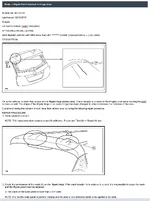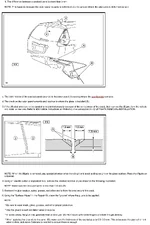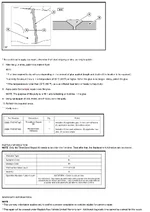From a German site:
My dealer has confirmed this recently when my Mazda5 was in for repair.
Translation: My theory is the following: Color black, and/or dark colors, absorbs more light and reflects nearly no remaining light. This is called in plain language: Black heats itself faster than other colors, that is probably clear to everyone. This makes me suppose that the cracks mainly occur on black Mazda5's, since these, due to the color, have higher variations in temperature. By the variations in temperature materials expand and pull together again, that's also clear to everyone. Thus this theory results that a black tailgate expands more and pulls together more than e.g. a white tailgate and as a result cracks in the weakest place.
******* en of translation *******
I find this interesting, since:
- My Mazda5 is Phantom Blue, which is reasonably dark.
- Last summer, the cracks almost disappeared while the car was in the sun and they reappeared when the sun disappeared.
(Please excuse me for any mistakes in the translation, I'm Dutch and though I can read German, I'm far from a native speaker
Translation: the cracks in the tailgate appear, as has been guessed in this forum for some time, not because the tailgate is pushed towards the second position, but because of different expansion of materials: tailgate made of plastic, hinges made of steel. This has been badly designed by the Mazda engineers.die risse in der heckklappe enstehen, wie hier im forum vor lngerer zeit bereits vermutet, nicht durch hochdrcken in die 2. stufe, sondern durch die unterschiedliche materialausdehnung. klappe aus kunsstoff, scharniere aus stahl. wurde von mazdaexperten bei der konstruktion einfach falsch berechnet.
dies hat mir mein hndler vor kurzem, als meine repariert wurde, besttigt !
My dealer has confirmed this recently when my Mazda5 was in for repair.
Meine Theorie ist folgende:
Farbe SCHWARZ, bzw dunkle Farben, absorbieren mehr bis das ganze Licht und reflektieren fast keine briggebliebenen Spektralfarben.
Heit im Klartext: Schwarz heizt sich schneller auf als andere Farben, das ist ja wohl jedem klar, oder?
Somit spinn ich hier mal rum und behaupte, das die Risse vorwiegend an schwarzen Mazdas auftreten, diese durch die Farbe bedingt, hheren Temperaturschwankungen ausgesetzt sind.
Durch die Temperaturschwankungen dehnen sich Materialien aus und ziehen sich wieder zusammen, ist auch jedem klar.
Somit ergibt sich diese Theorie, da sich eine schwarze Heckklappe mehr ausdehnt und zusammenzieht als zb eine weie und dadurch an der schwchsten Stelle reisst.
Translation: My theory is the following: Color black, and/or dark colors, absorbs more light and reflects nearly no remaining light. This is called in plain language: Black heats itself faster than other colors, that is probably clear to everyone. This makes me suppose that the cracks mainly occur on black Mazda5's, since these, due to the color, have higher variations in temperature. By the variations in temperature materials expand and pull together again, that's also clear to everyone. Thus this theory results that a black tailgate expands more and pulls together more than e.g. a white tailgate and as a result cracks in the weakest place.
******* en of translation *******
I find this interesting, since:
- My Mazda5 is Phantom Blue, which is reasonably dark.
- Last summer, the cracks almost disappeared while the car was in the sun and they reappeared when the sun disappeared.
(Please excuse me for any mistakes in the translation, I'm Dutch and though I can read German, I'm far from a native speaker



